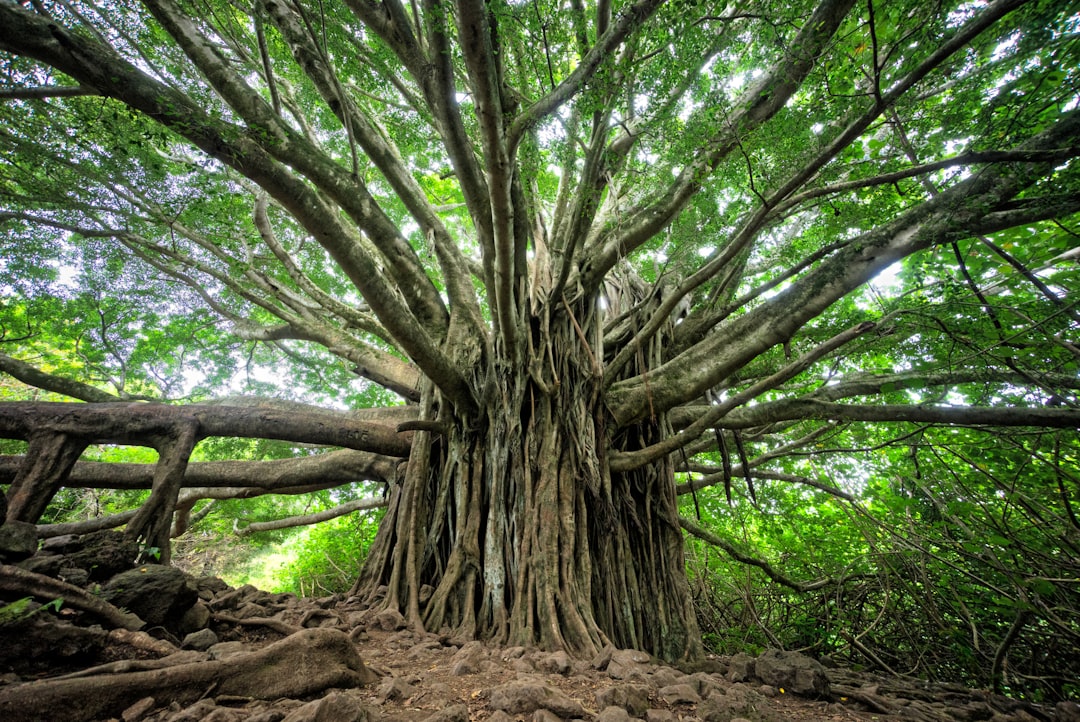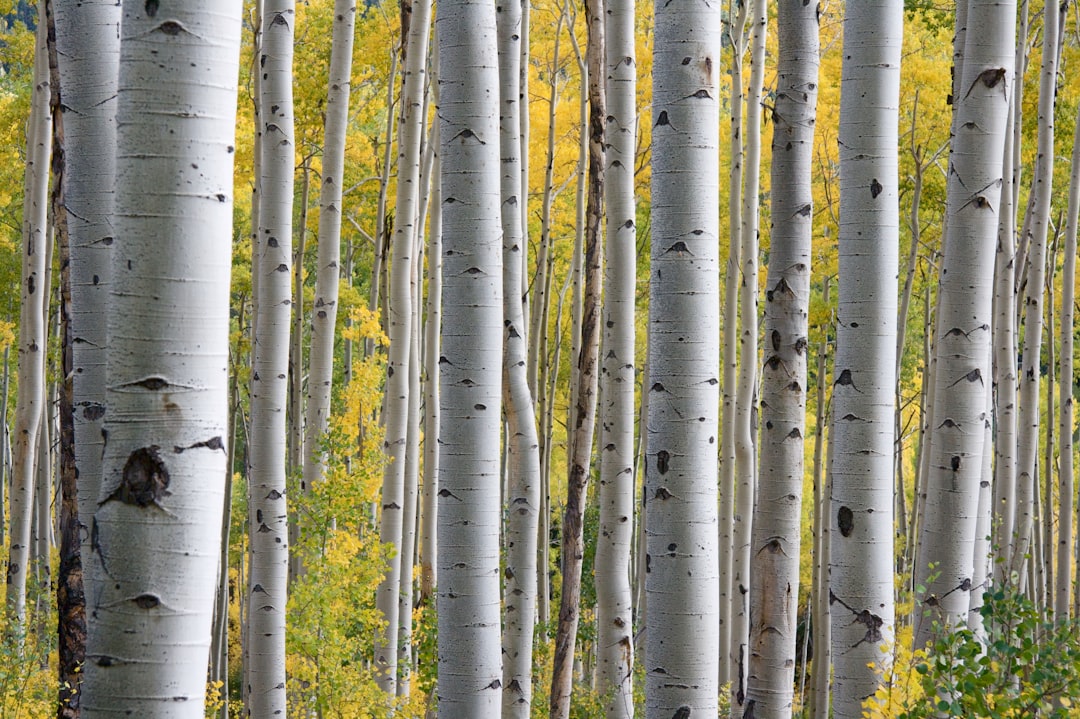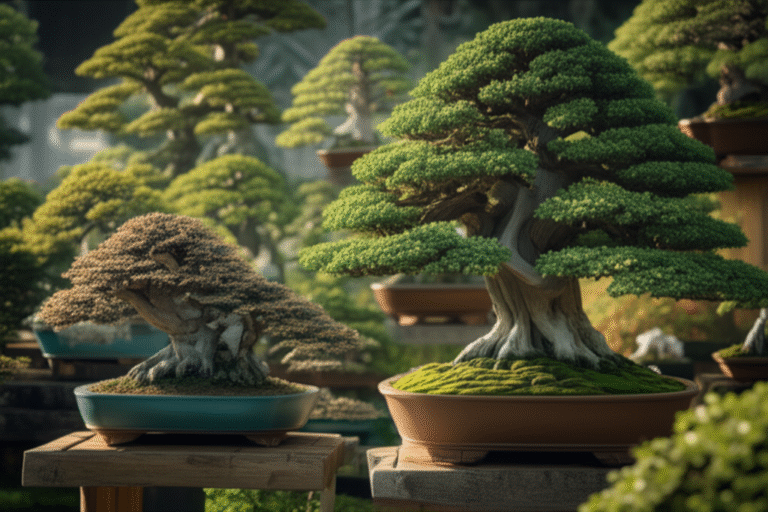Support our educational content for free when you buy through links on our site. Learn more
Have you ever stared at a tiny bonsai tree and wondered, “How on earth do people keep these miniature marvels alive—and looking so stunning?” You’re not alone! Growing a bonsai tree is often seen as a mystical art reserved for seasoned gardeners, but the truth might surprise you. In this article, we’ll unravel 8 essential secrets that reveal just how challenging (or doable!) bonsai cultivation really is. From picking the perfect species to mastering pruning and troubleshooting pesky pests, we’ve got the full scoop to help you decide if bonsai is your next green-thumb adventure.
Did you know that some bonsai trees take decades to reach their iconic shapes? But don’t let that intimidate you—many beginner-friendly species grow quickly and respond well to care, making bonsai a rewarding hobby for novices and experts alike. Ready to discover what it takes to grow your own living masterpiece? Let’s dive in!
Key Takeaways
- Bonsai difficulty varies by species, environment, and your dedication—some trees are beginner-friendly, others require expert care.
- Proper watering, lighting, and soil are the foundation of bonsai health; overwatering is a common pitfall.
- Pruning, wiring, and repotting are essential techniques to shape and maintain your bonsai’s miniature form.
- Patience is key: bonsai growth is a long-term journey, often taking 5–20 years to mature.
- Troubleshooting pests and diseases early can save your bonsai from serious damage.
- Indoor vs. outdoor bonsai require different care approaches—choose species accordingly.
- Investing in quality bonsai tools and supplies makes the process smoother and more enjoyable.
Ready to get started? Check out these top-rated bonsai starter kits and tools to kick off your journey:
- Bonsai Starter Kits: Amazon | Walmart
- Pruning & Wiring Tools: Hozuki Bonsai Tool Set on Amazon | Hozuki Official Website
Table of Contents
- Quick Tips and Facts About Growing Bonsai Trees 🌱✅
- The Art and History of Bonsai: How It Shapes Your Growing Journey 🌳🎎
- Understanding Bonsai Difficulty Levels: How Hard Is It Really? 🤔🔥
- 1. Choosing the Right Bonsai Tree Species for Beginners 🌿🌟
- 2. Essential Bonsai Tree Care: Watering, Soil, and Sunlight Tips 💧☀️🌱
- 3. Mastering Bonsai Growing Techniques: Pruning, Wiring, and Repotting ✂️🔧🌳
- 4. Styling Your Bonsai: From Classic to Creative Designs 🎨🌿
- 5. Troubleshooting Common Bonsai Problems: Pests, Diseases, and Growth Issues 🐛🚫🦠
- 6. Advanced Tips for Growing Bonsai Indoors vs. Outdoors 🌞🏠🌳
- 7. Tools and Supplies Every Bonsai Gardener Should Have 🛠️🌿
- 8. How Long Does It Take to Grow a Bonsai Tree? Patience and Progress ⏳🌱
- Conclusion: Is Growing a Bonsai Tree Worth the Effort? 🌟🌳
- Recommended Links for Bonsai Enthusiasts 🔗🌿
- Frequently Asked Questions (FAQ) About Bonsai Tree Growing ❓🌱
- Reference Links and Resources for Bonsai Gardening 📚🌳
Quick Tips and Facts About Growing Bonsai Trees 🌱✅
As bonsai gardeners at Bonsai Garden™, we often get asked, why is bonsai so expensive? 🌟 Understanding the value and the process behind growing these miniature trees can help you appreciate the art form even more. Here are some quick tips and facts to get you started:
- Start with the right species: Choose a species that suits your environment and skill level.
- Water wisely: Overwatering is a common mistake. Check the soil moisture daily.
- Provide adequate light: Most bonsai trees need bright, indirect light.
- Fertilize regularly: Use a balanced, water-soluble fertilizer during the growing season.
- Prune regularly: Pruning is essential for maintaining shape and promoting healthy growth.
Essential Tools for Bonsai Care
You’ll need a few basic tools to get started, including:
- Concave cutters for removing branches
- Wire cutters for cutting aluminum or copper wire
- A root hook for gently removing the tree from its pot
The Art and History of Bonsai: How It Shapes Your Growing Journey 🌳🎎

Bonsai is an ancient art form that originated in China and was later perfected in Japan. The word “bonsai” comes from the Japanese terms “bon,” meaning tray, and “sai,” meaning plant. This art form is not just about growing trees in small pots; it’s about creating a balance between nature and human intervention. As Bonsai Empire notes, “Bonsai trees are not genetically dwarfed plants, but rather normal plants that are trained using techniques to keep them in a miniature form.”
The Impact of Bonsai History on Modern Growing Techniques
Understanding the history and philosophy behind bonsai can help you appreciate the patience and dedication required to grow these trees. It’s not just about the end result but about the journey, the process of nurturing and shaping your tree over time. For more insights into the world of bonsai, visit our Bonsai for Beginners section.
Understanding Bonsai Difficulty Levels: How Hard Is It Really? 🤔🔥
Growing a bonsai tree can be challenging, but with the right guidance, anyone can succeed. The difficulty level depends on several factors, including the species of the tree, your environment, and your level of experience. According to Gardeners World, “Caring for an indoor bonsai tree is more challenging than caring for regular house plants because bonsai trees are planted in small pots, so the roots have less compost for water and nutrients.”
Assessing Your Readiness for Bonsai Growing
Before you start, assess your readiness by considering your ability to provide the necessary care and attention. If you’re new to bonsai, start with a hardy species like Ficus or Juniper, which are more forgiving.
1. Choosing the Right Bonsai Tree Species for Beginners 🌿🌟
Choosing the right species is crucial for success. Consider the climate you live in, the amount of time you have to care for your tree, and your personal preferences. For indoor bonsai, species like Ficus retusa and Schefflera are popular choices. For outdoor bonsai, consider species like Juniper and Japanese Maple.
Factors to Consider When Selecting a Species
- Hardiness: Choose a species that can thrive in your local climate.
- Growth rate: Consider how quickly you want your tree to grow.
- Leaf type: Decide if you prefer deciduous or evergreen trees.
2. Essential Bonsai Tree Care: Watering, Soil, and Sunlight Tips 💧☀️🌱
Proper care is essential for the health and survival of your bonsai tree. Here are some tips:
- Watering: Water your tree when the top inch of soil feels dry to the touch.
- Soil: Use a well-draining bonsai soil mix to prevent root rot.
- Sunlight: Most bonsai trees need bright, indirect light.
Creating the Right Environment
To create the right environment for your bonsai tree, consider the following:
- Humidity: Maintain a humid environment, especially for tropical species.
- Temperature: Keep your tree in an area with a consistent temperature between 65-75°F (18-24°C).
3. Mastering Bonsai Growing Techniques: Pruning, Wiring, and Repotting ✂️🔧🌳
Mastering the techniques of pruning, wiring, and repotting is crucial for shaping and maintaining your bonsai tree. Pruning helps control the size and shape of your tree, while wiring allows you to create intricate designs. Repotting is necessary to provide fresh soil and a larger pot as your tree grows.
Pruning Techniques
- Prune during the dormant season: This helps prevent stress and promotes healthy growth.
- Use the right tools: Invest in good-quality pruning shears and concave cutters.
4. Styling Your Bonsai: From Classic to Creative Designs 🎨🌿
Styling your bonsai tree is an art form that requires patience and creativity. From classic formal upright styles to more creative and informal designs, the possibilities are endless. Consider the natural shape and characteristics of your tree when deciding on a style.
Exploring Different Styles
- Formal Upright: A classic style that suits many species.
- Informal Upright: A more relaxed, natural style.
- Cascade: A dramatic style where the tree flows over the edges of the pot.
5. Troubleshooting Common Bonsai Problems: Pests, Diseases, and Growth Issues 🐛🚫🦠
Common problems that bonsai tree owners face include pests, diseases, and growth issues. Regular inspection and quick action can help prevent these problems from becoming severe.
Identifying Common Pests and Diseases
- Spider mites: Look for fine webbing on the leaves.
- Root rot: Check for soft, mushy roots.
- Leaf spot: Identify brown or black spots on the leaves.
6. Advanced Tips for Growing Bonsai Indoors vs. Outdoors 🌞🏠🌳
Growing bonsai trees indoors or outdoors requires different approaches. Indoor trees need more protection from extreme temperatures and humidity levels, while outdoor trees need protection from harsh weather conditions.
Considering Indoor and Outdoor Environments
- Indoor: Provide bright, indirect light and maintain a consistent temperature.
- Outdoor: Choose a species that can tolerate your local climate and provide protection from extreme weather.
7. Tools and Supplies Every Bonsai Gardener Should Have 🛠️🌿
Having the right tools and supplies is essential for the care and maintenance of your bonsai tree. Here are some must-haves:
- Pruning shears: For trimming and shaping your tree.
- Wire cutters: For cutting aluminum or copper wire.
- Bonsai pot: A well-draining pot specifically designed for bonsai trees.
Investing in Quality Tools
- Buy from reputable suppliers: Ensure you’re getting high-quality tools that will last.
- Maintain your tools: Regularly clean and sharpen your tools to prevent rust and maintain effectiveness.
8. How Long Does It Take to Grow a Bonsai Tree? Patience and Progress ⏳🌱
Growing a bonsai tree requires patience and dedication. The time it takes to grow a bonsai tree can vary significantly depending on the species, growing conditions, and level of care. On average, it can take anywhere from 5 to 20 years to develop a mature bonsai tree.
Understanding the Growth Stages
- Seedling stage: The initial stage where the tree is developing its root system and leaf structure.
- Sapling stage: The tree starts to grow taller and develop its branch structure.
- Maturity stage: The tree has reached its desired size and shape, requiring regular maintenance to keep it healthy and thriving.
For more detailed guides and tips on growing bonsai trees, visit our Bonsai Care Basics and Bonsai Species Guide sections. Happy growing! 🌱💚
Conclusion: Is Growing a Bonsai Tree Worth the Effort? 🌟🌳

After diving deep into the art, science, and sheer joy of growing bonsai trees, one question remains: Is it really hard to grow a bonsai tree? The honest answer is—it depends. Bonsai gardening is a rewarding blend of patience, skill, and passion. While it does require more attention than your average houseplant, the challenge is part of the charm. As we shared earlier, choosing the right species, mastering watering and pruning, and understanding your tree’s needs are key to success.
If you’re a beginner, starting with hardy species like Ficus or Juniper can set you up for a flourishing bonsai journey. The process may take years, but each stage brings new learning and satisfaction. Remember, bonsai is as much about the journey as the destination—watching your miniature tree grow and transform is a meditative and artistic experience like no other.
So, is it hard? ✅ Yes, but with the right tools, knowledge, and a sprinkle of patience, it’s absolutely doable—and incredibly rewarding. Ready to start your bonsai adventure? We’re here to help every step of the way!
Recommended Links for Bonsai Enthusiasts 🔗🌿
Ready to gear up or dive deeper into bonsai? Here are some carefully selected products and resources to get you growing like a pro:
- Bonsai Starter Kits:
- Pruning and Wiring Tools:
- Popular Bonsai Species:
- Books for Bonsai Beginners:
- Bonsai Basics: A Step-By-Step Guide to Growing, Training & General Care by Christian Pessey & Remy Samson Amazon Link
- The Complete Book of Bonsai: A Practical Guide to Its Art and Cultivation by Harry Tomlinson Amazon Link
Frequently Asked Questions (FAQ) About Bonsai Tree Growing ❓🌱

What are the basic requirements for growing a healthy bonsai tree?
Growing a healthy bonsai tree starts with proper watering, lighting, soil, and pruning. Your bonsai needs well-draining soil to prevent root rot, consistent moisture without waterlogging, and sufficient light—usually bright, indirect sunlight. Regular pruning keeps the tree’s shape and encourages dense foliage. Additionally, fertilizing during the growing season provides essential nutrients. Don’t forget to choose a species suited to your climate and indoor/outdoor conditions. For more detailed care tips, check out our Bonsai Care Basics.
Read more about “Why Is Bonsai So Expensive? 10 Surprising Reasons Explained! 🌳💰”
How long does it take to train a bonsai tree to achieve the desired shape and size?
Training a bonsai tree is a long-term commitment. Depending on the species and your styling goals, it can take anywhere from 5 to 20 years to develop a mature, refined bonsai. Fast-growing species like Chinese Elm or Ficus may show results sooner, while slower growers like Japanese Maple require more patience. Initial shaping often begins within the first few years, but ongoing pruning and wiring are needed to maintain and refine the design. Remember, bonsai is a living art that evolves continuously.
What are the most common mistakes beginners make when growing a bonsai tree, and how can they be avoided?
Beginners often stumble on these pitfalls:
- Overwatering or underwatering: Check soil moisture regularly; bonsai soil should be moist but not soggy.
- Insufficient light: Bonsai trees need plenty of bright, indirect light—lack of light causes weak growth.
- Ignoring pruning: Without regular pruning, bonsai lose their shape and become leggy.
- Wrong species for environment: Selecting a tropical bonsai for an outdoor temperate climate leads to stress and death.
- Neglecting repotting: Bonsai roots need space and fresh soil every 2-5 years.
Avoid these by educating yourself, observing your tree closely, and starting with beginner-friendly species. Our Bonsai for Beginners section is packed with tips to help you avoid these traps.
How often should I water and fertilize my bonsai tree to ensure optimal growth and development?
Watering frequency depends on species, pot size, soil, and climate. Generally, check the soil daily and water when the top 1 inch feels dry. Indoor bonsai may need watering every 2-3 days, outdoor bonsai more frequently in summer. Use a watering can or gentle spray to avoid soil erosion.
For fertilizing, apply a balanced bonsai fertilizer every 1-2 weeks during the growing season (spring through early fall). Use diluted liquid fertilizer or slow-release pellets formulated for bonsai. Reduce or stop fertilizing in winter when growth slows. Over-fertilizing can harm roots, so follow product instructions carefully.
Reference Links and Resources for Bonsai Gardening 📚🌳
For further reading and verification, these authoritative sources provide excellent guidance and inspiration:
- Bonsai Empire – Comprehensive Bonsai Growing Guide
- Gardeners World – Indoor Bonsai Tree Care
- Arborist Now – A Beginner’s Guide to Bonsai Trees
- Hozuki Bonsai Tools Official Website
- Bonsai Garden™ – Bonsai for Beginners
- Bonsai Garden™ – Bonsai Care Basics
- Bonsai Garden™ – Bonsai Species Guide
- Bonsai Garden™ – Bonsai FAQs
Ready to embark on your bonsai journey? Remember, every great bonsai started with a single seed or sapling—and a gardener who dared to dream small but think big! 🌳✨



